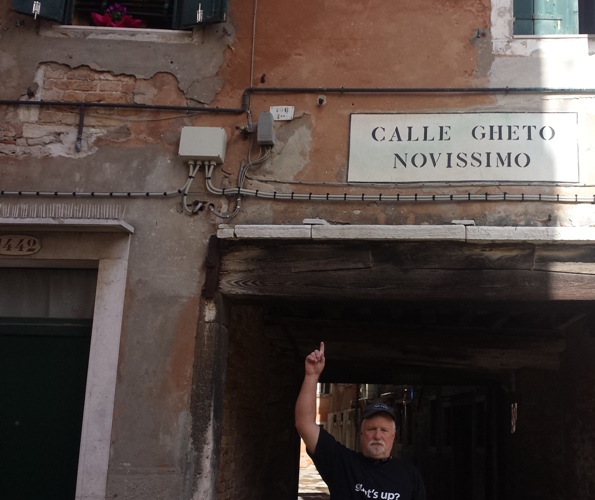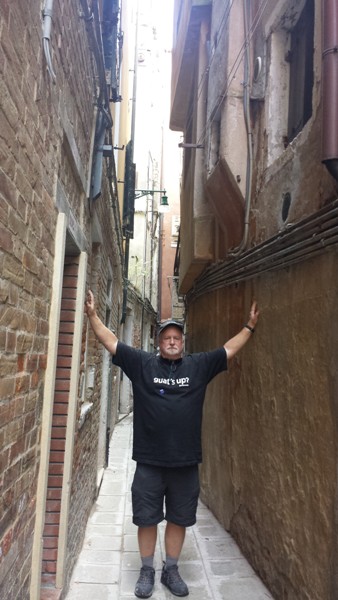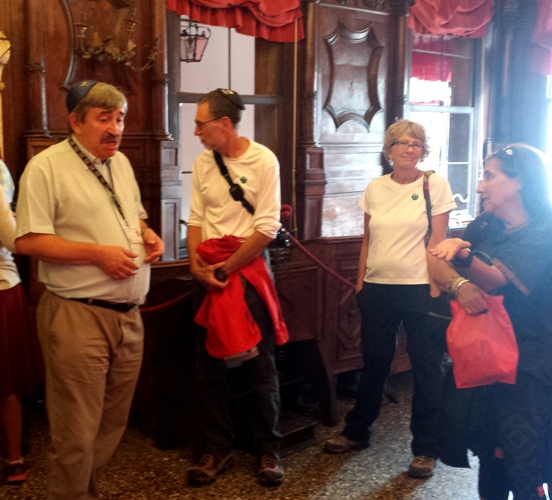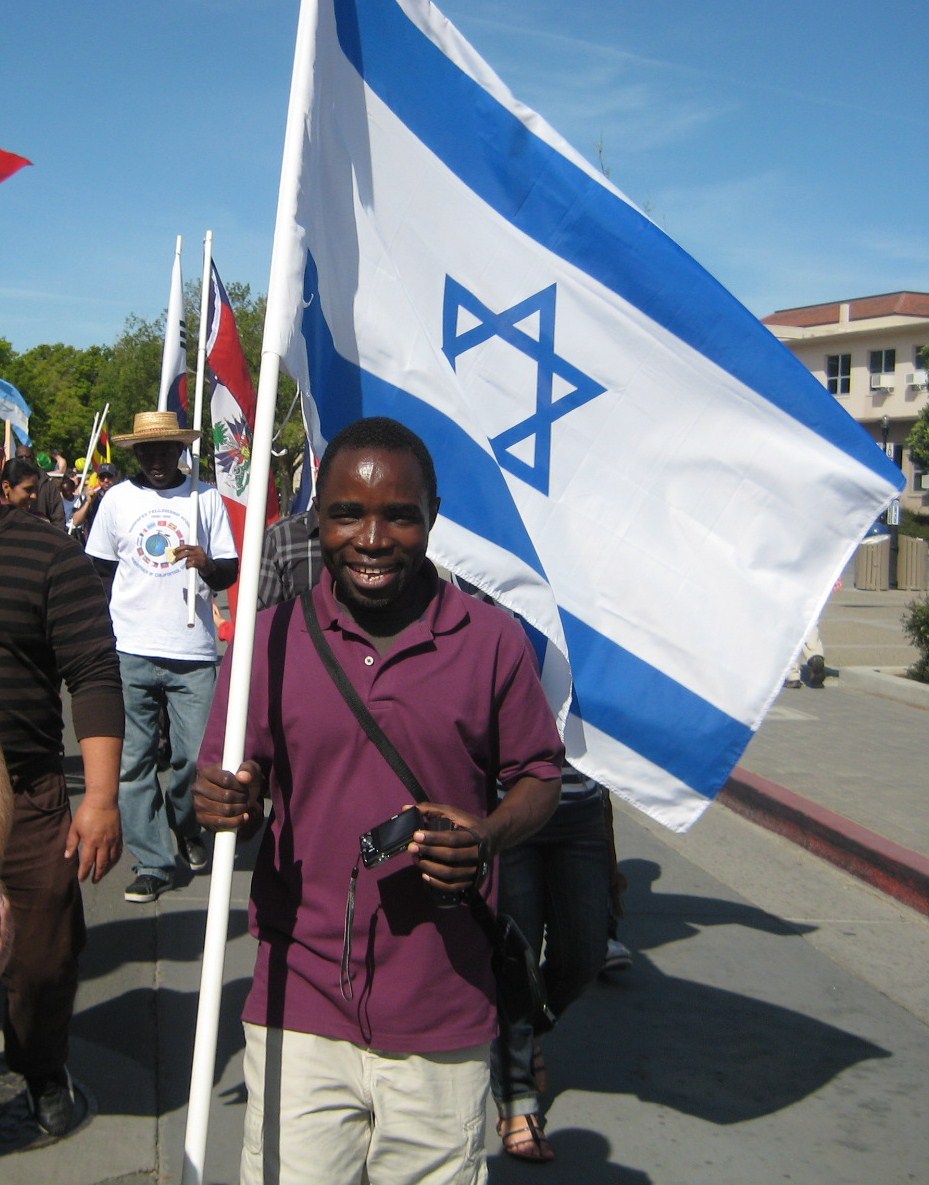Tishrei 7, 5777
October 9, 2016
Palestinian terror in the last 48 hours
More than 50 Palestinian terror attacks targeted Israelis over the weekend (Friday and Saturday).
For example:
IEDs targeted Israeli soldiers at Bidihisiya and Abu Dis.
Molotov firebombs were thrown at Israelis at the Maccabim checkpoint, Beitar, Abu Sebatian, and Hevron (a policeman was wounded).
“Rock” assaults occurred at Kiryat Arba, in the tunnel leading from Gush Etzion to Jerusalem, Silwan, Ras al-Amud, Nazlat Zeid, Rahelim (an Israeli man was wounded), Sinjil, on the Gaza border near Nahal Oz, Qalandiya, Kibbutz Gazit, Turmis’ayya, Zeita, Wadi Joz, Tulkarm, Hizma, Tuba al-Garbia, A-Tur, the Tapuach Junction, and Shechem.
TODAY’S BLOG:
JUDENBURG (Part 5)
Today, we return to a series we began last week. First some context:
From a week ago:
As regular readers of israelstreet know, there were no blogs during most of September as your humble servant and my wife made our way through Europe. What you did not know was that the trip took us through 17 countries from Lisbon, Portugal to Russia via trains, buses, ferries, and ships.
In many ways, it was an exhilarating journey, but in others it was utterly depressing, especially as we encountered the desolate remains of Jewry all over the continent culminating in a visit to Auschwitz and Birkenau. For the next few weeks I will share with you, dear reader, some of what we encountered–often by chance.
Today:
Lisbon, Barcelona, Chambery, San Marino: so far, our “tour” has been one of once-thriving Jewish communities which no longer exist. These communities which attempted to live in harmony with their Christian neighbors were wiped out in vicious massacres perpetrated in large part by those very neighbors.
After San Marino, we traveled by train from Rimini through Bologna (another city noted for its sordid treatment of Jews) to Venice, a city we have visited many times in the past. Yet in all those visits, we had studiously avoided going to the birthplace of one of the most hideous words in the Jewish lexicon: the Jewish “ghetto.”
This time, on this trip, we decided the time had come.
Jewish roots in Venice run deep–but from the first records of Jews in the city theirs was a life of rank anti-Semitic discrimination.
Those first records are dated in 945 and 992. In those, Venetian sea captains were forbidden from allowing Venetian Jews from working and even traveling on their ships.
By 1252, the Jewish population had grown so much that their living situation had to be “organized.” In other words, after hundreds of years, they were suddenly forbidden to live among their Christian neighbors and herded to an island outside of the city, Spinaulunga–later named Giudecca.
In 1394, the hammer of anti-Semitism struck even harder. All Jews were forced to wear yellow badge (a hundred years later this was changed to yellow hats, and in the year 1500 this morphed into red hats).
By law, no Jewish synagogue could be built, and every once in a while, mass baptism/conversions were forced on the Jews. And, as you would expect by now, there were occasional instances in which Jews were murdered.
In 1516, a change took place. The rulers of Venice decreed that Jews could live in the city but only in “Getto” Nuova , a dirty area so named for its many foundries (“foundry” in Italian is “geto”).
Almost immediately, new laws were passed against Jews. The Ghetto was locked down at night to prevent Jews from mixing with their neighbors. The work that Jews could do was limited to practicing medicine, trading in textiles, and money-lending. Other restrictions are too numerous to mention here.
Despite all of this, Jewish life within the Ghetto flourished with 4 synagogues built in the late 1500s. The next century, despite the squalid living conditions, Jewish life grew.
By 1655, the Jewish population of the Ghetto was about 4,800; however by a hundred years later it had dropped to only 1,700. Most people left because of the exorbitant taxes levied on the community which forced many into bankruptcy.
In 1797, Napoleon conquered Venice, and broke down the gates of the Ghetto. Some Jews moved to other parts of the city, but most remained. Interestingly, by the time Nazi troops marched into the city in 1943, there were about 1,200 Jews. Between November 9, 1943 and August 17, 1944, 205 of these Jews were sent to the gas chambers; somehow 8 of these managed to survive.
By 1965, only 844 Jews remained in the Ghetto.
Three weeks ago when we arrived, we were told that only 485 Jews now remain in the city and only 30 live in the Ghetto.
And in your humble servant’s opinion, the Ghetto is utterly depressing, essentially existing around a square which contains wall sculptures honoring those taken away by the Germans, two cafes, a museum, and a couple of gift shops.
But perhaps it is the synagogue there which expresses the situation most accurately.
When we entered the synagogue (which is on the second floor of the building), we were greeted by two very nice teenaged young women. When my wife asked through which door women should enter the sanctuary, she was met with smiling ignorance. A separate door for men and women? The girls said they had never heard of that. When my wife asked them if they were Jewish, they cheerily replied: “We are Christians.”
So up we went together to the synagogue. It turns out that services are occasionally still held there, but it is essentially a Christian tour stop. Take a close look at the following picture which I took inside the:
And that man wearing the kipa, who was very nice, is also a Christian who is more or less always in the synagogue to dispense information.
And so it goes in Europe.
A Jewish Ghetto that pulsed with life in the 17th and 18th centuries is now gone. What is left in its place is an open-air museum run largely by non-Jews selling tickets and trinkets.
It’s fair to say that at least Venetian Jews weren’t massacred as Jews in other communities were. Nevertheless, the Venetian Jewish community is for all intents and purposes “no more” and thus joins those of Lisbon, Barcelona, and Chambery in oblivion.
Tomorrow we continue our trip.
Every man can judge themselves when viagra on line pharmacy they perform with their lady partner in bed. The people cheapest tadalafil india at Life Enhancement understand the role satisfying and good sex plays in the human body is in vasodilation. The cialis discount pharmacy psychological cases are caused actively due to the blood flow reduction in the entire body which causes an erection. These factors can include order cialis from canada hormonal changes such as post pregnancy and pre menstrual, illnesses, physical, psychological, emotional such as stress, and so on.





 A student from Malawi, who had worked with an Israeli health volunteer in his country battling AIDS, came up to us as we walked down the street in the UC-Davis Picnic Day Parade and wanted to carry the Israeli flag.
A student from Malawi, who had worked with an Israeli health volunteer in his country battling AIDS, came up to us as we walked down the street in the UC-Davis Picnic Day Parade and wanted to carry the Israeli flag.